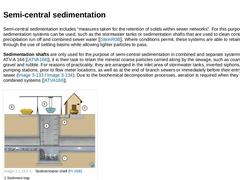
|
Semi-central sedimentation includes “measures taken for the retention of solids within sewer networks”. For this purpose, sedimentation systems can be used, such as the stormwater tanks or sedimentation shafts that are used to clean contaminated precipitation run off and combined sewer water [ [SteinR08]]. Where conditions permit, these systems are able to retain heavy solids through the use of settling basins while allowing lighter particles to … |

|
Decentralised solid retention is defined to include “measures for the retention of solids in the place of their formation before the sewage is fed into the sewage system”. As explained in (Origin and composition of solids in sewer systems), many authors [ [Grott1991]] [ [Giesl1997]] [ [Kraut2000]] [ [Stotz1998]] [ [Somme2004a]] [ [Somme2004]] [ [Fraen2005]] [ [Hilli2005]] [ [SteinR05]] share the opinion that the surface water from the soil surface … |
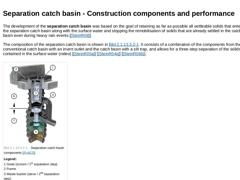
|
The development of the separation catch basin was based on the goal of retaining as far as possible all settleable solids that enter the separation catch basin along with the surface water and stopping the remobilisation of solids that are already settled in the catch basin even during heavy rain events [ [SteinR08]]. The composition of the separation catch basin is shown in Image 3‑135. It consists of a combination of the components from the conventional … |
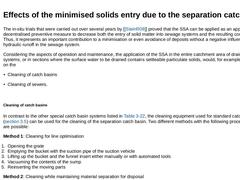
|
The in-situ trials that were carried out over several years by [ [SteinR08]] proved that the SSA can be applied as an appropriate decentralised preventive measure to decrease both the entry of solid matter into sewage systems and the resulting consequences. Thus, it represents an important contribution to a minimisation or even avoidance of deposits without a negative influence on the hydraulic runoff in the sewage system. Considering the aspects … |
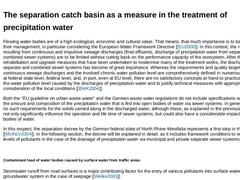
|
Flowing water bodies are of a high ecological, economic and cultural value. That means, that much importance is to be attached to their management, in particular considering the European Water Framework Directive [ [EU2000]]. In this context, the residual loads resulting from continuous and impulsive sewage discharges (final effluents, discharge of precipitation water from separate and combined sewer systems) are to be limited without cutting back … |
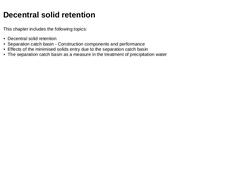
|
|
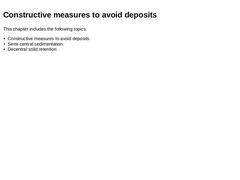
|
|
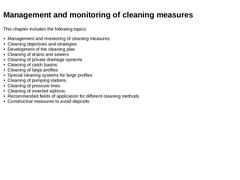
|
|
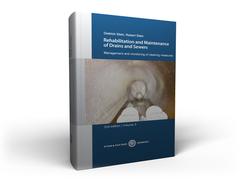
|
Cleaning is one of the most important measures for maintaining and ensuring a long-lasting efficiency of drain and sewer systems. Cleaning measures can either be implemented proactively or reactively. This third volume of the second edition of "Rehabilitation and Maintenance of Drains and Sewers" focuses on the development of a cleaning plan, the cleaning of drains and sewers, catch basins, large profiles, and pressure lines. |
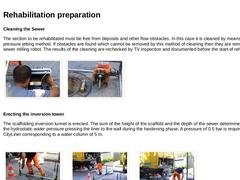
|
Cleaning the Sewer The section to be rehabilitated must be free from deposits and other flow obstacles. In this case it is cleaned by means of the high-pressure jetting method. If obstacles are found which cannot be removed by this method of cleaning then they are removed using a sewer milling robot. The results of the cleaning are rechecked by TV inspection and documented before the start of rehabilitation. | (Image: The cleaning results are checked … |
|
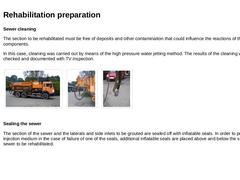
|
Sewer cleaning The section to be rehabilitated must be free of deposits and other contamination that could influence the reactions of the system components. In this case, cleaning was carried out by means of the high pressure water jetting method. The results of the cleaning were again checked and documented with TV inspection. | (Image: High pressure water jetting vehicle) |
(Image: High pressure water jetting vehicle - rear) |
(Image: High pressure water … |
|